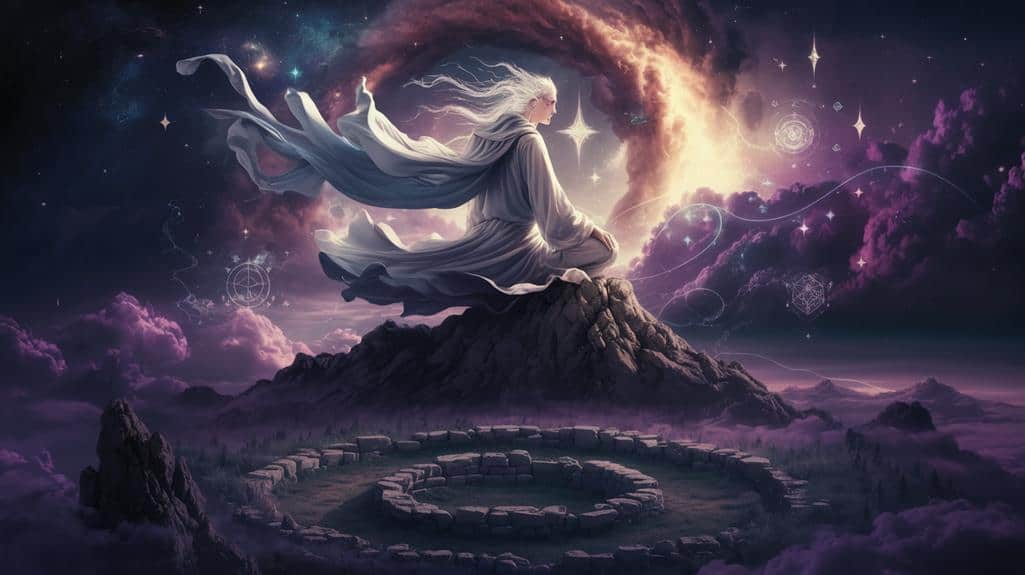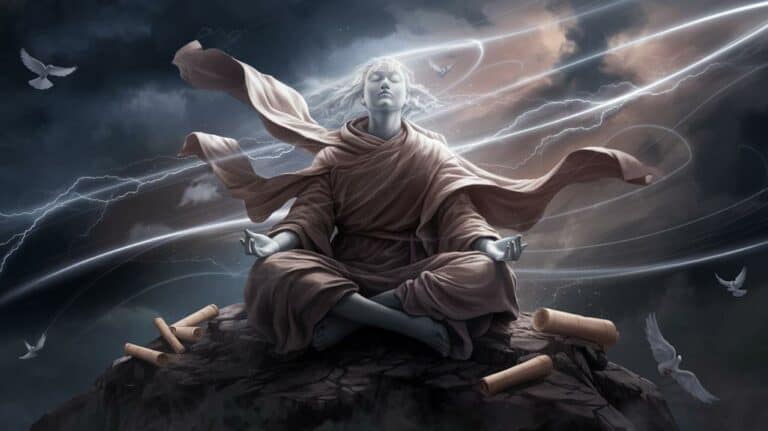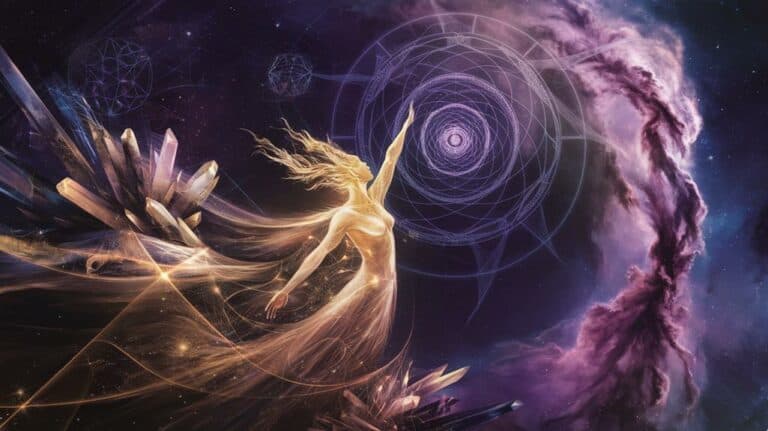What Does Mysticism Mean?
You’ve likely encountered the term “mysticism” in various contexts, but its true meaning extends far beyond the common associations with magic or the supernatural. When you’re exploring mysticism, you’re entering a domain where direct spiritual experience takes precedence over dogma and theory. It’s a path that’s intrigued philosophers, religious leaders, and seekers throughout history, offering glimpses of what lies beyond our ordinary consciousness. Whether you’re examining the ecstatic visions of Christian saints or the profound insights of Sufi poets, you’ll find that mysticism represents humanity’s enduring quest to understand its relationship with the divine.
Defining the Mystical Experience
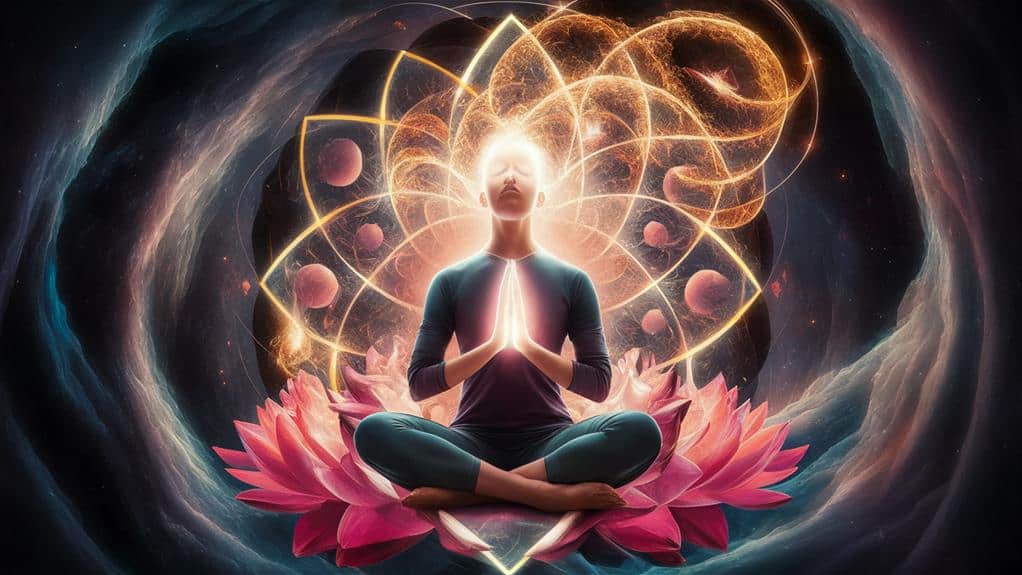
Every mystical experience shares fundamental qualities that set it apart from ordinary states of consciousness. When you encounter the mystical, you’ll find yourself transcending the boundaries of everyday perception, entering a domain where time and space seem to dissolve into an infinite present moment.
You’ll sense an overwhelming unity with something vast and ineffable, recognizing that you’re connected to a reality far greater than your individual self.
In these profound moments, you’ll discover that words become inadequate to fully capture what you’re experiencing. You might feel a deep knowing that defies logical explanation, an intuitive understanding that resonates at your core.
The experience often brings with it an unshakeable certainty about the fundamental nature of reality, even as it paradoxically reveals the limits of human comprehension. You’ll likely feel a dissolution of your usual sense of self, as if you’ve merged with a universal consciousness that’s both intimately personal and cosmically vast.
These encounters tend to leave an indelible mark on your consciousness, fostering a transformed perspective that continues to influence your understanding of existence long after the immediate experience has passed.
Historical Roots of Mysticism
Seekers of spiritual truth have explored mystical experiences across cultures and civilizations since the dawn of human consciousness. You’ll find mystical traditions woven into humanity’s earliest recorded texts, from the Vedic scriptures of ancient India to the shamanic practices of indigenous peoples worldwide.
As you trace mysticism’s roots, you’ll discover how ancient Egyptian mystery schools safeguarded esoteric knowledge, while Greek philosophers like Plotinus explored divine union through contemplative practices.
The medieval period brought forth Christian mystics such as Meister Eckhart and Julian of Norwich, who’d speak of direct experiences with the divine, often challenging institutional religious authorities.
In the East, you’ll encounter the profound insights of Sufi mystics like Rumi and Buddhist masters who’ve mapped the territories of consciousness through meditation.
These traditions don’t just represent historical artifacts – they’re living streams of wisdom that continue to shape contemporary spiritual seekers.
Through the ages, mystics have consistently pointed to a fundamental truth: you’re capable of directly experiencing transcendent reality. This understanding has survived centuries of persecution, skepticism, and social change, emerging ever stronger in each new era.
Cross-Cultural Mystical Traditions
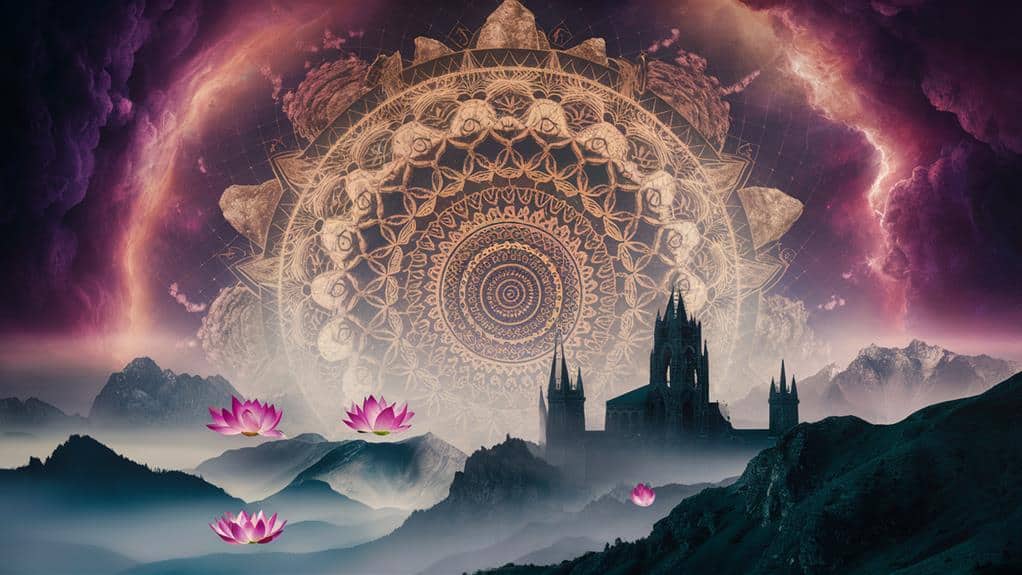
Unity emerges as a striking feature when examining mystical traditions across different cultures. You’ll find that whether you’re exploring Sufism in Islam, Kabbalah in Judaism, or Zen in Buddhism, there’s an underlying thread that connects these seemingly disparate paths. Each tradition speaks of direct, transformative experiences that transcend ordinary consciousness and connect you with something greater than yourself.
You’ll discover that mystics across time and space have described remarkably similar experiences: a dissolution of the ego, a sense of oneness with the universe, and an ineffable understanding that defies conventional language.
In Hindu traditions, you’ll encounter the concept of “samadhi,” while Christian mystics speak of “divine union” – different words pointing to the same profound reality. The Taoists’ pursuit of alignment with the natural flow of existence mirrors Native American spiritual practices that seek harmony with the Great Spirit.
These parallel experiences suggest that you’re encountering universal truths about consciousness and reality, rather than culturally bound phenomena. While the paths may differ, they’re leading you toward the same summit of spiritual realization, where the boundaries between self and cosmos dissolve into unity.
Common Elements of Mystical Teachings
Mystical teachings’ core elements remain remarkably consistent across traditions, despite their diverse cultural origins.
You’ll find that mystics worldwide speak of direct, transformative experiences with ultimate reality – experiences that transcend ordinary perception and conventional religious doctrine.
You’ll discover several universal themes as you explore these teachings: the recognition of an underlying unity behind all existence, the limitations of rational thought in grasping ultimate truth, and the necessity of personal transformation through spiritual practice.
These traditions consistently point to the illusion of separateness, teaching that you’re fundamentally connected to all that exists.
The path they describe often includes specific practices: meditation, contemplation, and various forms of ritual or devotional activities.
You’ll notice they emphasize the importance of experienced wisdom over intellectual knowledge, suggesting that truth must be lived rather than merely understood.
Whether you’re studying Sufi poetry, Buddhist sutras, or Christian mystical texts, you’ll encounter the recurring message that your everyday perception of reality is limited, and that there’s a deeper truth awaiting your discovery through direct spiritual experience.
Science and Mystical States
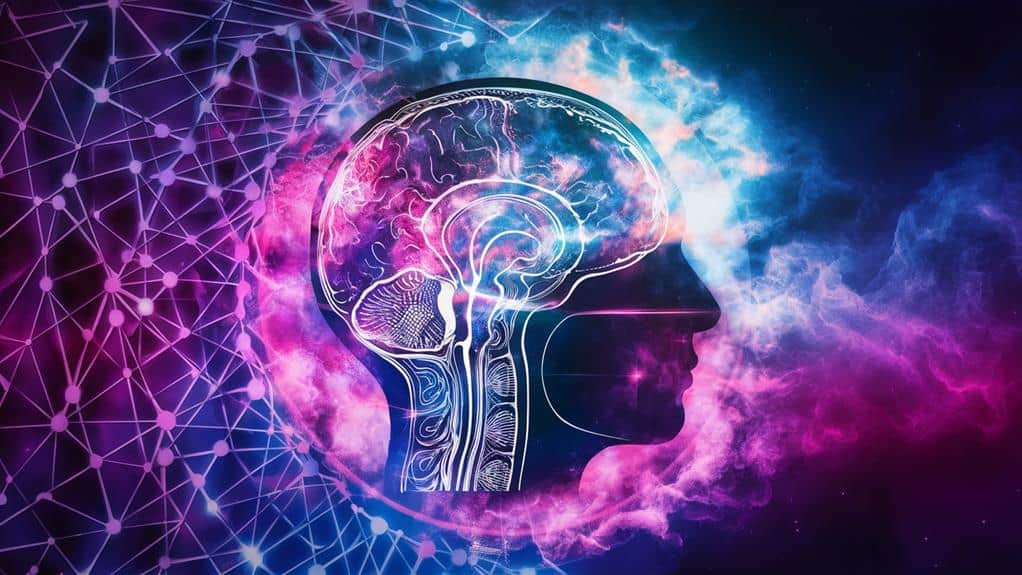
Modern science has begun investigating mystical experiences through neurological and psychological research, revealing fascinating insights into these profound states of consciousness.
You’ll find that researchers have identified specific brain activity patterns during meditation and mystical experiences, showing decreased activity in areas associated with your sense of self while increasing activity in regions linked to feelings of unity and transcendence.
When you explore the scientific perspective, you’ll discover that mystical states share common neurological signatures across different spiritual traditions, suggesting a universal human capacity for transcendent experience.
Brain imaging studies have shown that you’re accessing altered states of consciousness that can be measured and studied, though the deeper meaning of these experiences remains beyond purely materialistic explanations.
You’ll notice that science isn’t dismissing mystical experiences but rather providing additional frameworks for understanding them.
Research into psychedelics and contemplative practices has demonstrated that you can reliably induce states similar to spontaneous mystical experiences, offering new pathways to study these profound aspects of human consciousness while bridging the gap between spiritual wisdom and scientific inquiry.
Modern Approaches to Mysticism
Contemporary approaches to mysticism encompass three distinct frameworks: academic study, experiential practice, and therapeutic application.
You’ll find today’s scholars analyzing mystical experiences through psychological, neurological, and sociological lenses, while maintaining respect for the ineffable nature of these profound states.
In experiential practice, you’re no longer limited to traditional religious paths.
You’ll discover modern practitioners integrating ancient wisdom with contemporary methods, including mindfulness meditation, breathwork, and somatic awareness. These approaches allow you to explore mystical dimensions while remaining grounded in your daily life.
The therapeutic application has gained significant traction as mental health professionals recognize mystical experiences’ healing potential.
You’ll see this integration in transpersonal psychology and psychedelic-assisted therapy, where carefully guided encounters with mystical states can catalyze profound personal transformation.
What’s particularly striking is how these modern approaches don’t diminish mysticism’s essence but rather expand its accessibility.
You’re living in an era where scientific rigor meets spiritual wisdom, creating pathways for authentic mystical exploration that honor both ancient traditions and contemporary understanding.
This synthesis offers you unprecedented opportunities to engage with mystical dimensions while maintaining intellectual integrity.
Mystical Practices Through Time
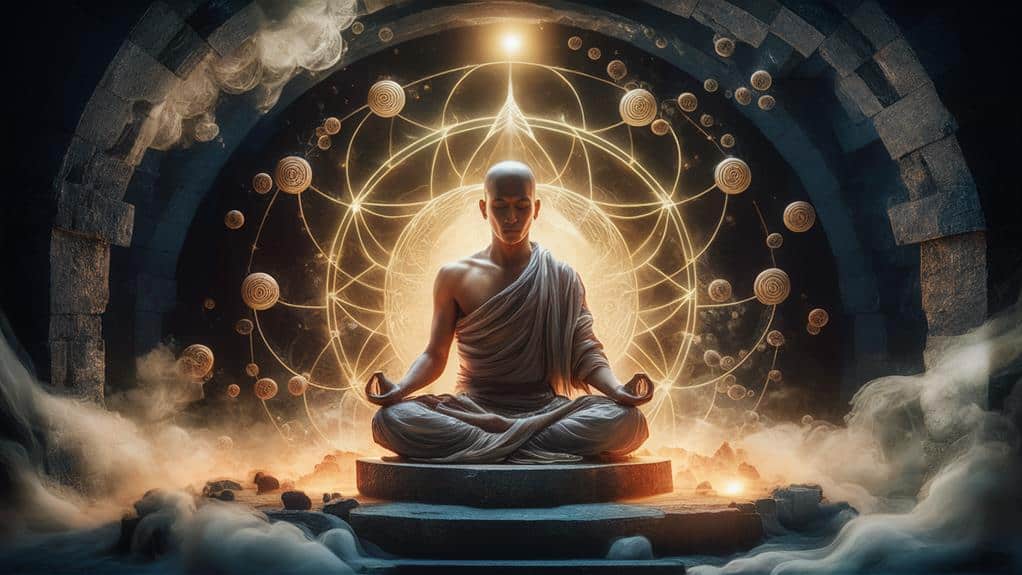
Throughout human history, spiritual seekers have developed diverse practices to access mystical states of consciousness. You’ll find that across cultures and traditions, these methods often share surprising commonalities – from the rhythmic chanting of Gregorian monks to the whirling meditation of Sufi dervishes, and from the focused breathing of Buddhist practitioners to the contemplative prayer of Christian mystics.
When you explore these time-honored practices, you’ll discover they’re rooted in universal human experiences: the power of breath, movement, sound, and silence. Ancient shamans used drumming and dance to transcend ordinary reality, while Hindu yogis developed sophisticated systems of meditation and pranayama.
You’ll notice that many mystical traditions incorporate fasting, isolation, or vigils as ways to shift consciousness beyond everyday awareness.
Today, you can access these practices through various contemporary adaptations. Whether it’s through mindfulness meditation, sacred dance, or contemplative walking, you’re participating in a lineage that stretches back through millennia.
These techniques continue to evolve while maintaining their essential purpose: helping you break through the barriers of ordinary perception to experience deeper dimensions of reality.
The Future of Mysticism
Looking into the future of mysticism, we’re seeing a fascinating convergence of ancient wisdom with cutting-edge technology.
You’ll find virtual reality meditation spaces where you can practice centuries-old techniques while being guided by AI spiritual assistants, and biofeedback devices that help you achieve deeper states of consciousness.
As you navigate this evolving landscape, you’ll discover that mystical practices are becoming more accessible and personalized than ever before.
Digital platforms are creating global communities where you can share transcendent experiences with kindred spirits across continents, while quantum computing may soon help reveal the mysteries of consciousness itself.
Yet, you’ll notice that the essence of mysticism remains unchanged – the timeless quest to connect with something greater than yourself.
Whether you’re using a smartphone app to track your meditation progress or participating in traditional ceremonies, you’re part of humanity’s enduring journey toward enlightenment.
The future of mysticism isn’t about replacing ancient wisdom but rather enhancing your ability to access it through modern means, creating a bridge between timeless truths and contemporary understanding.
Conclusion
You’re commencing on a timeless quest that’s both deeply personal and universally shared. As you explore mysticism’s infinite depths, you’ll find it’s not just an abstract concept but a living tradition that continues to evolve. Whether through meditation, contemplative practice, or spiritual inquiry, you’re connecting to something far greater than yourself – an eternal conversation between consciousness and the cosmos that transcends time, culture, and rational understanding.



